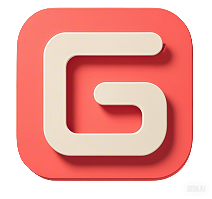Introduction
Direct-to-Film (DTF) printing has surged in popularity, becoming a top choice for businesses and entrepreneurs in custom apparel. Its ability to produce vivid, durable designs on various fabrics sets it apart from traditional methods. Whether you’re starting a business or upgrading your equipment, choosing the right DTF printer is crucial.
In this guide, we’ll explore the fundamentals of DTF printing, key factors to consider when selecting a printer, expert recommendations for 2025, and practical insights to help you make the best decision.
What Is DTF Printing?
How It Works
DTF printing involves transferring designs onto a special PET film, coating it with adhesive powder, and heat-pressing it onto fabric. This technique allows for unmatched versatility, supporting diverse materials like cotton, polyester, leather, and more.
Advantages
- Material Versatility: Prints on almost any fabric, including blends.
- Vivid Colors: Achieves high-quality results with excellent color accuracy.
- Cost Efficiency: Minimal setup makes it ideal for small-batch production.
- Durability: Long-lasting designs resistant to washing and wear.
Key Factors When Choosing a DTF Printer
1. Print Resolution and Quality
Higher DPI (dots per inch) ensures sharper and more detailed prints. Aim for at least 1440 DPI for professional results.
2. Speed and Efficiency
Evaluate printers based on production speed. High-speed models are essential for commercial operations.
3. Cost Considerations
- Initial Investment: Printer price.
- Ongoing Costs: Ink, PET films, and maintenance supplies.
- Compare long-term costs across different models to find the best value.
4. Software and Compatibility
Ensure compatibility with popular design tools (e.g., Adobe Illustrator, CorelDRAW) and RIP software for optimal control.
5. Maintenance and Support
Choose printers with:
- Reliable customer support.
- Easy-to-source parts and consumables.
- Low-maintenance designs.
6. Application Needs
Different businesses have varying needs:
- High-volume production: Requires industrial-grade printers.
- Personalized projects: Needs printers with high-resolution capabilities.
Top 5 Best Printers for DTF in 2025
1. High-End Choice: Epson SureColor F570 Pro
- Best For: Large-scale commercial users.
- Key Features:
- PrecisionCore technology for consistent quality.
- Wide-format (24 inches) for large projects.
- High resolution: 2400 DPI.
- Price Range: $2,500–$3,000.
- Pros: Outstanding print quality, reliable for high volumes.
- Cons: Premium cost.
2. Mid-Range Performer: L1800 DTF Printer
- Best For: Small to medium businesses.
- Key Features:
- Compact and easy to operate.
- Supports A3+ format for medium-sized prints.
- Affordable consumables.
- Price Range: $1,200–$1,500.
- Pros: Excellent value for money, versatile.
- Cons: Slower speeds for high-demand projects.
3. Budget-Friendly Option: Epson EcoTank 8550
- Best For: Beginners and hobbyists.
- Key Features:
- EcoTank system for low-cost ink refills.
- Compact design.
- Reliable color reproduction.
- Price Range: $800–$1,000.
- Pros: Affordable, easy to use.
- Cons: Limited scalability for large businesses.
4. Specialty Choice: Ricoh Ri 1000
- Best For: Businesses needing flexibility.
- Key Features:
- Prints on various surfaces.
- Intuitive touch interface.
- Auto-cleaning system.
- Price Range: $3,000–$3,500.
- Pros: Versatile, minimal downtime.
- Cons: Higher operational costs.
5. Advanced Performer: Mutoh XPJ-661UF
- Best For: High-detail projects on diverse materials.
- Key Features:
- UV printing for detailed, durable designs.
- Excellent for specialty substrates like wood or leather.
- Advanced RIP software for precision control.
- Price Range: $4,500–$5,000.
- Pros: Superior versatility, premium results.
- Cons: High initial cost.
Case Study: DTF Printing in Action
Scenario 1: High-Volume Commercial Printing
- User: A custom apparel company.
- Solution: Epson SureColor F570 Pro.
- Results: Increased production by 40%, reduced print errors by 25%.
Scenario 2: Startup on a Budget
- User: A small gift shop.
- Solution: Epson EcoTank 8550.
- Results: Launched a new product line with minimal investment, breaking even in 3 months.
DTF Printing FAQs
How do I maintain a DTF printer?
- Clean printheads regularly.
- Use high-quality, compatible inks and films.
- Perform software updates to maintain compatibility.
What is the lifespan of a DTF printer?
With proper maintenance, most models last 5–7 years.
How can I optimize print quality?
- Use high-resolution images (300 DPI or more).
- Calibrate printer settings for color accuracy.
- Preheat fabrics to improve adhesion.
Emerging Trends in DTF Printing
- Sustainability: The rise of eco-friendly inks and recyclable PET films.
- Automation: AI-driven features for auto-calibration and error detection.
- New Applications: Growth in non-textile markets like wood and ceramics.
Conclusion
Choosing the best printer for DTF involves balancing your needs, budget, and production goals. For high-volume users, the Epson SureColor F570 Pro offers unmatched quality. For startups, the L1800 DTF Printer is a versatile, cost-effective option. Hobbyists can begin their journey with the Epson EcoTank 8550 without breaking the bank.
Ready to make your choice? Explore our recommended options to elevate your printing game!
